Michael the Brave, savior of Europe?
The history of Romania as a concrete country is generally assumed to have started with the Romanian, or Danubian, principalities, similarly to how the history of Russia as a concrete country starts with Muscovy. Both of these histories are of late medieval origin, having come into being in the wake of the Mongol invasions of Europe. In both comparable cases, however, the concrete starting point is not the same as the ethnologically related spiritual precursor from which the original states derived their patronage. In the case of Russia, the spiritual precursor was the Kievan Rus’, which was situated in present-day Ukraine. For the Romanian principalities, it was the Latin-speaking element of Constantinople, which originally ruled that city. That their patronage originated in Constantinople would be a crucial, if now overlooked, starting point for the princes of Moldavia and Wallachia – and their enemies.[1] [2]
For example, Mehmed II “the Conquerer” opposed the semi-autonomy of the Romanian principalities as vassals of the Ottoman Empire. As long as Wallachia and Moldavia still stood as states in the 1400s, Mehmed’s work in overrunning Constantinople was incomplete. This is why he unsuccessfully sought to crush the principalities with armies larger than the one he had used to conquer Constantinople.[2] [3] Stephen the Great of Moldavia did not really see himself as a crusader against Islam, but he earned that reputation by handing Mehmed the worst defeat the Turks had yet seen in 1475.
Officially, the principalities of Wallachia and Moldavia both, in early modern times, held the status of what is known in traditional Islamic international law as a “house of peace” – which is neither a “house of Islam,” in the sense that either Islamic countries or thoroughly conquered areas like Bulgaria and Greece were, nor classified as an enemy “house of war.” The Ottomans only had control of port cities on the northern bank of the Danube or the coasts of the Black Sea, not firm control of the land, as in the countries south of the Danube.
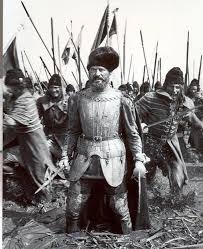
The principalities were not considered outright Ottoman territory until the beginning of the eighteenth century. By then, the Ottomans, hoping to pacify a geopolitically ambiguous region that had caused them so much trouble, installed a dynasty of initially pro-Turkish Greek rulers called the Phanariots as puppet princes in the Romanian principalities. Before the Phanariot rule, no mosques (nor synagogues) could be legally built in the principalities unless the Prince himself made an exception, and the Romanian principalities were never allowed to be sources of janissary conscription. Wars between the principalities and the Turks had occasionally erupted when these terms were violated.
It should be noted that Habsburg Austria officially held the same status for decades. After the Ottoman Empire overran the Kingdom of Hungary (1526), Ottoman forces unsuccessfully besieged Vienna (1529). For the remainder of the sixteenth century, these two powers would be at war. Habsburg Austria, embroiled in other power struggles in Europe, would be content with appeasing the Turks, paying the Porte to leave Vienna alone whenever possible. This limited the struggles between the Habsburgs and the Ottomans to battles and skirmishes on the disputed Hungarian frontier for decades after 1529, but it also left Austria in an uncomfortable state of vassalage. The Turks continued to reject the Habsburg Emperors’ preferred title, “Emperors of Rome.”
“In previous centuries,” noted the German jurist and philosopher Carl Schmitt, “a controversy existed between the German kaiser (and king of Hungary) and the Turkish sultan on the question of whether the payments made by the kaiser to the sultan were in the nature of a ‘pension’ or a ‘tribute’. The debtor stressed that he did not pay ‘tribute’ but ‘pension’, whereas the creditor considered it to be ‘tribute’.”[3] [4]
The issue Schmitt refers to here is that Austria was technically an Ottoman vassal from the first siege of Vienna in 1529 up until the conclusion of the Long War in 1606, when the Ottomans humiliatingly agreed to address the Habsburgs as “Emperors of Rome.” This undermined the entire Ottoman mission since Mehmed II in the fifteenth century, which had been to conquer and destroy any state that claimed patronage from Rome. However, the amount of money paid to the Turks to leave Vienna alone actually increased in return for this Habsburg political victory, even as it was discredited as true tribute money. This contradiction wouldn’t be resolved until after the 1683 second siege of Vienna, or Battle of Vienna. Thus, the misnomer “Ottoman rule” does not apply all that much more, as a legal status, to the pre-eighteenth century Romanian principalities than it does to Austria at one point — though the Ottoman vassalage had always been much more directly felt in the principalities.
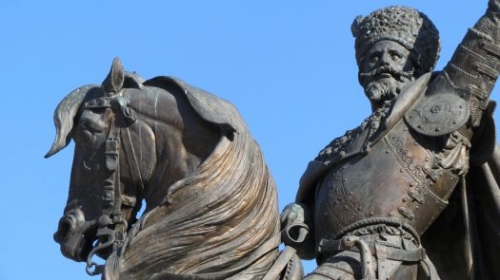
Michael the Brave (1558-1601) attempted to do away with Wallachia’s vassal status altogether and turn it into an empire. This Wallachian prince was, as Hans Corneel de Roos has shown, the main historical basis of Bram Stoker’s Count Dracula – when the villainous vampire was still alive.[4] [5] De Roos’ research, even more than earlier arguments by Elizabeth Miller, has displaced the claim of Raymond T. McNally and Radu R. Florescu that Stoker based his character on Vlad Țepeș.
Interestingly, McNally and Florescu themselves, in Dracula, Prince of Many Faces: His Life and His Times, note that a certain character mentioned by the Count appears to be based on Michael the Brave.[5] [6] What they do not mention is one important detail it simply takes a careful reading of Stoker’s book to understand – namely, that the Count is speaking in the third person about himself in life.[6] [7]
In the Count’s recollection in the third chapter of Bram Stoker’s Dracula, the nostalgic rant that Jonathan Harker calls “the story of his race,” Dracula describes an ancestor of his, whom Stoker did indeed base on Vlad Țepeș. Stoker, as De Roos has shown, confused Vlad Țepeș, or Vlad Dracula, with his father (and Michael the Brave’s ancestor), Vlad Dracul. In making this mistake, Stoker appears to have reflected his source, William Wilkinson’s 1820 book Account of the Principalities of Wallachia and Moldavia with Political Observations Relative to Them. Stoker, again like his source, knew more about Michael the Brave than Vlad Țepeș.[7] [8]
This shouldn’t surprise us. After all, Vlad Țepeș was a late-medieval, pre-Columbian historical figure, while Michael the Brave was a figure from what Anglophone historiography remembers as the Elizabethan era. Michael the Brave, a relative of Vlad Țepeș and a more successful military strategist, was more often written about in English than his predecessor until the twentieth century. There is reason to suspect that Prince Michael was written about in Britain at the time.
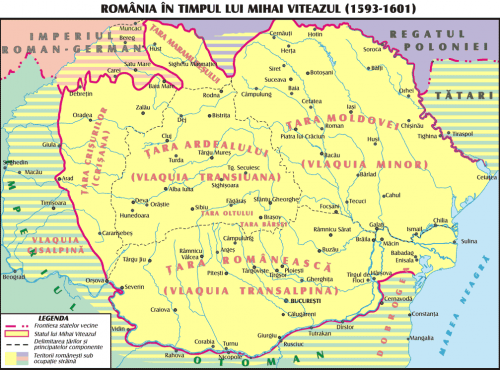
In Writing the Ottomans: Turkish History in Early Modern England, Anders Ingram writes, “The years of the Ottoman–Hapsburg ‘Long War’ of 1593–1606 brought an unprecedented flood of English publishing on the Turks. A substantial portion of this material either directly describes, or explicitly refers to, the events of this conflict.” During this time – which was also the age in which the plays of Christopher Marlowe, which likewise display a keen interest in the Ottoman Wars, revolutionized English literature – England’s “contemporary news market was dominated by foreign news, or reports of English involvement on the continent, rather than domestic affairs.”[8] [9]
Michael the Brave was a central figure of the Long War. Although not mentioned in Ingram’s study, it would be an interesting task to determine whether and to what extent the Wallachian prince is mentioned in any of “the fifty-four [English] items on the topic of the Turks recorded in the years 1591 to 1610,” of which “twenty-two relate either directly to the Long War, the state of Hungary, or Ottoman–Habsburg conflict, while numerous others allude to contemporary events.”[9] [10] Considering Prince Michael’s outstanding role in the Long War, it would be more surprising to come up empty-handed in this endeavor than to see this question answered in the affirmative. During the Long War, until his 1601 assassination, he was both an accomplished military commander and a controversial political leader.
A 1901 article called “THE JEWS OF ROUMANIA FROM THE EARLIEST TIMES TO THE PRESENT DAY,” published by the American Jewish Committee, offers a glimpse into what led Prince Michael to reject the status quo in Wallachia’s relations with the Ottoman Empire. The study explains:
With the sixteenth century came new immigrations, composed of Polish and Turkish Jews . . . This was exactly at the time when the Jews of Turkey began to play an important rôle in the State and to gain diplomatic influence at the court, in the harems, and with the pashas and the grand viziers; and the princes of Moldavia and Wallachia turned to these influential Jews to obtain the throne or to strengthen themselves in possession. Commerce with Turkey was extended, and the Jews of Constantinople and other places frequently visited the principalities. Many established themselves there permanently. But the situation of the Jews varied with the prince, and depended upon the favor which he obtained from an influential Jew or Jewess at Constantinople.[10] [11]
Before Michael the Brave came to the Wallachian throne in 1593, he had worked this corrupt system like any other ambitious contender. Upon his rise to power, however, the moneylenders who had expected to control him were fatally disappointed. The above-mentioned Jewish source notes:
In 1594 Michael the Brave of Wallachia assembled his creditors, Turks, Greeks, and Jews, and had them all massacred; and he then informed certain individuals that they would all be released from their debts. This was the signal for a general slaughter of Turks and Jews. The entire community of Bukharest [sic] perished.
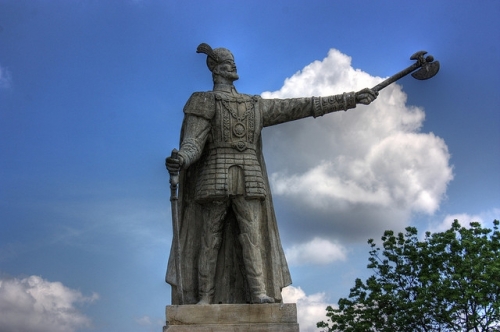
Thus began the first stage of an anti-Ottoman crusade in which Michael and the allied Moldavians “massacred the Jews wherever their armies passed . . .”[11] [12]
The final decade of the sixteenth century in Eastern Europe has been described as “the time when the fierce sword blows of the crusader Michael were striking against the Turks along the Danube,”[12] [13] and even far beyond the Danube, pushing as far south as Adrianople (today’s Erdine, Turkey). It was thus that Mina Harker could say of Count Dracula in life that he “won his name against the Turk, over the great river on the very frontier of Turkeyland.”[13] [14]
Michael the Brave, later feeling betrayed by his Hungarian allies, the Báthory princes of Transylvania, turned his attention northward and controversially conquered that Hungarian-ruled principality, with the help of the Hungarian-speaking Szeklers. His conquest of Moldavia in the northeast was similarly based on betrayal by a formerly allied principality. It was in Moldavia that he would recruit many Polish-registered Cossacks, who settled there.
Making quite a few enemies from Turkey to Central Europe, from the Jews to the Porte to the papacy, Michael was assassinated in 1601 by an Albanian-Italian mercenary general named Giorgio Basta. According to one historian of Hungary, Austria, and Slovakia during the Long War, Basta later “likely accompanied the Pope, both in a ceremonial and protective capacity,” and probably “served as an emissary to the Papal entourage” as well.[14] [15] Basta’s subsequent iron-fisted rule over Transylvania led to revolts among the Hungarian nobles and the Christian side of the Long War was then reduced to the defensive, freeing Austria from official Ottoman vassalage at a high price by 1606.
However, the Ottoman Empire still had to defend itself from the network of Cossack raiders that Michael had helped build throughout the principalities, especially in Moldavia, by enthusiastically using Cossacks in his armies. Some of these Cossacks were also registered in Poland’s army, and accordingly they dragged Poland into wars with the Turks. This would be a problem for the Porte for the duration of the infamous Thirty Years’ War in Europe (1618-1648), when the Turkish sultans had to deal with constant Cossack raids and a rebellious janissary corps – and were thus unable to take advantage of the Thirty Years’ War and strike at Vienna. In Polish historiography, this period is known as the Moldavian Magnate Wars.

By the time they belatedly and unsuccessfully besieged Vienna in 1683, the Turks faced a new, rationalistic system of Western international law. On both sides of the English Channel, this new system of thinking about foreign affairs had been built in response to the seventeenth century’s bloody sectarian fighting within Continental Europe and in the British Isles. In this cold new order, the Ottoman rule of Hungary had no place, and the former Kingdom of Hungary was wrested from Ottoman hands by the end of that century. Thus began the two centuries of the receding of the Ottoman holdings in Southeastern Europe.
By this time, so much blood had been spilled that Michael the Brave was largely forgotten as one of the chief instigators of the Christian reconquest of Southeastern Europe on land, following the Ottoman Empire’s defeat at sea in the Battle of Lepanto (1571). In Romania, he is mostly remembered for uniting Transylvania with Wallachia and Moldavia for a brief time. His dream of a pan-Christian empire stretching from the Carpathians to the Mediterranean Sea, Orthodox in character but tolerant of Protestants and Catholics, had died with him. But it was an ideal that helped turn the tide of history in its time.
Notes
[1] [16] For the best English introduction to early Romanian history and ethnology, see A. K. Brackob, Mircea the Old: Father of Wallachia, Grandfather of Dracula (Buffalo, N.Y.: The Center for Romanian Studies, Histria Books, 2018).
[2] [17] The remarks in this essay about Ottoman war aims in relation to the principalities’ original patronage were inspired by the author’s conversations with Romanian historian Fr. Dr. Mihai-Andrei Aldea. He is the author of several published and upcoming books in Romanian.
[3] [18] Carl Schmitt, The Concept of the Political, tr. George Schwab (Chicago: The University of Chicago Press, 2007).
[4] [19] Hans Corneel De Roos, “Count Dracula’s Address and Lifetime Identity,” collected in Marius-Mircea Crișan (ed.), Dracula: An International Perspective (London: Palgrave Macmillan, 2017), pp. 95-118.
[5] [20] Radu R. Florescu & Raymond T. McNally, Dracula, Prince of Many Faces: His Life and His Times (Boston: Back Bay Books, 1989), p. 11 & 231.
[6] [21] Bram Stoker, Dracula (London: Constable & Co., 1987), chapters 3 & 18.
[7] [22] Hans Corneel De Roos, ““Bram Stoker’s Vampire Trap – Vlad the Impaler and his Nameless Double,” Linköping Electronic Articles in Computer and Information Science 14 (2012), no. 2.
[8] [23] Anders Ingram, Writing the Ottomans: Turkish History in Early Modern England (London: Palgrave Macmillan, 2015), p. 37.
[9] [24] Ibid, p. 37 (Note: The discrepancy in the spelling of “Habsburgs” is in Ingram’s original).
[10] [25] E. Schwarzfeld, “THE JEWS OF ROUMANIA FROM THE EARILIEST TIMES TO THE PRESENT DAY,” The American Jewish Year Book, Vol. 3, pp. 25-62, published by the American Jewish Committee.
[11] [26] Ibid.
[12] [27] Nicolae Iorga, tr. Laura Treptow, Byzantium After Byzantium (Portland, Or.: The Center for Romanian Studies in cooperation with the Romanian Institute of International Studies, 2000).
[13] [28] Bram Stoker, Dracula, Chapter 18.
[14] [29] Kimberly L. Craft, Infamous Lady: The True Story of Countess Erzsébet Báthory, 2nd ed. (South Charleston, S.C.: CreateSpace, 2014), p. 120.
 Son biographe, Robert Belot, rapporte dans Henri Frenay. De la Résistance à l’Europe (Le Seuil, coll. « L’Univers historique », 2002) un échange capital entre De Gaulle et Frenay à Alger. « L’erreur capitale, le péché mortel devant l’Histoire serait de restaurer ces États dans la plénitude d’une illusoire souveraineté. Le libre droit des peuples à disposer d’eux-mêmes, étant donné la mosaïque de peuples qui constitue le continent européen, doit être considéré comme l’une des causes principales de la guerre actuelle. […] La souveraineté n’est d’ailleurs pas une fin mais un moyen. Elle est le moyen de protéger les valeurs morales éternelles auxquelles un pays est attaché. Or à l’époque actuelle, la souveraineté se définit non seulement par une indépendance politique et militaire, mais encore par l’indépendance économique sans laquelle les autres formes d’indépendance ne sont qu’un leurre dangereux ». Le chancelier autrichien Metternich ne disait pas autre chose…
Son biographe, Robert Belot, rapporte dans Henri Frenay. De la Résistance à l’Europe (Le Seuil, coll. « L’Univers historique », 2002) un échange capital entre De Gaulle et Frenay à Alger. « L’erreur capitale, le péché mortel devant l’Histoire serait de restaurer ces États dans la plénitude d’une illusoire souveraineté. Le libre droit des peuples à disposer d’eux-mêmes, étant donné la mosaïque de peuples qui constitue le continent européen, doit être considéré comme l’une des causes principales de la guerre actuelle. […] La souveraineté n’est d’ailleurs pas une fin mais un moyen. Elle est le moyen de protéger les valeurs morales éternelles auxquelles un pays est attaché. Or à l’époque actuelle, la souveraineté se définit non seulement par une indépendance politique et militaire, mais encore par l’indépendance économique sans laquelle les autres formes d’indépendance ne sont qu’un leurre dangereux ». Le chancelier autrichien Metternich ne disait pas autre chose…

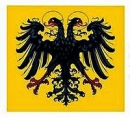


 del.icio.us
del.icio.us
 Digg
Digg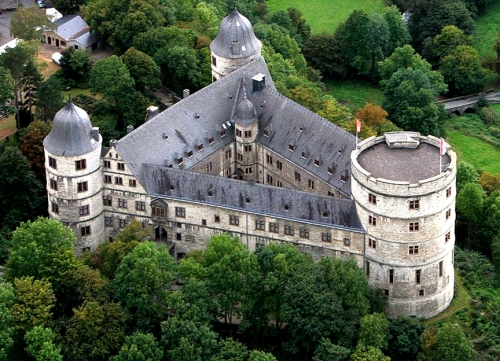
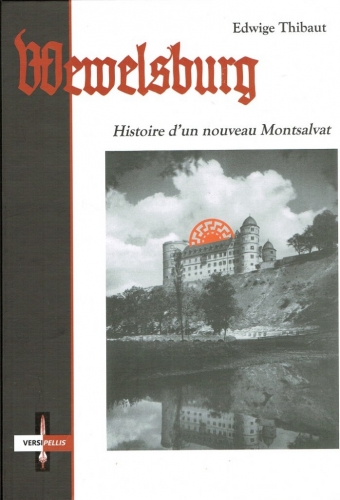 4) Abordons maintenant votre nouvel ouvrage Wewelsburg, histoire d’un nouveau Montsalvat. Celui-ci retrace l’histoire de ce lieu énigmatique pour beaucoup, fantasmé par certains. Que fut en réalité Wewelsburg ?
4) Abordons maintenant votre nouvel ouvrage Wewelsburg, histoire d’un nouveau Montsalvat. Celui-ci retrace l’histoire de ce lieu énigmatique pour beaucoup, fantasmé par certains. Que fut en réalité Wewelsburg ?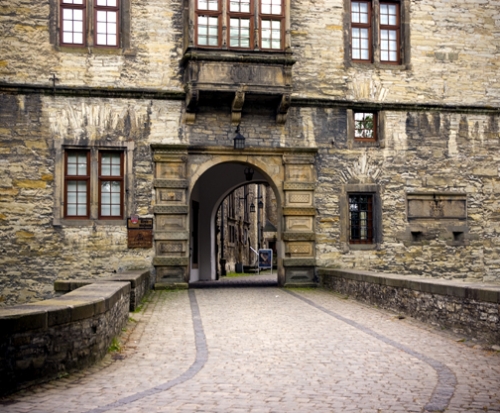
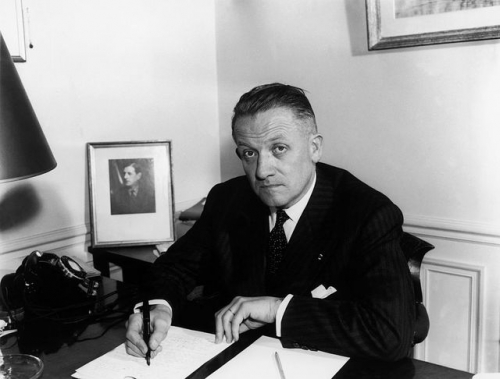
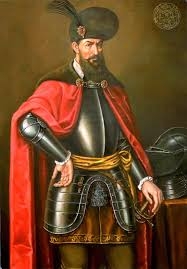






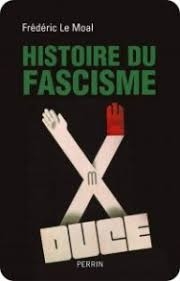 D’emblée, l’auteur veut répondre à cette question : qu’est-ce que le fascisme ? En effet, avant toute tentative d’explication, il convient de toujours définir correctement son sujet d’étude. Voici ce que nous pouvons lire dès les premières lignes : « Cette question a hanté les contemporains et continue d’alimenter les interrogations comme les recherches des historiens. Depuis son apparition en 1919, le fascisme entretient un impénétrable mystère sur sa véritable nature. »
D’emblée, l’auteur veut répondre à cette question : qu’est-ce que le fascisme ? En effet, avant toute tentative d’explication, il convient de toujours définir correctement son sujet d’étude. Voici ce que nous pouvons lire dès les premières lignes : « Cette question a hanté les contemporains et continue d’alimenter les interrogations comme les recherches des historiens. Depuis son apparition en 1919, le fascisme entretient un impénétrable mystère sur sa véritable nature. »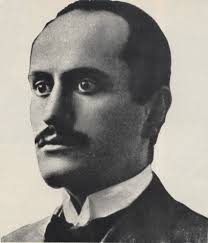 Comme chacun sait, Mussolini fut un fervent socialiste et surtout un haut cadre du Parti socialiste italien. Ce qu’on sait moins : « Mussolini fut fasciné par Nietzsche et Sorel, ardents zélateurs d’un pétrissage de l’âme humaine, mais aussi par les théories de Darwin. Dans sa jeunesse, Mussolini était un lecteur attentif de l’œuvre du savant anglais, et comme bon nombre de marxistes, il intégrait la lutte des classes dans le combat général pour l’existence au sein des espèces et la marche du progrès. Le darwinisme social faisait ainsi le lien entre la philosophie des Lumières qui coupa l’homme de sa création divine et les théories racistes auxquelles le fascisme n’échappera pas. »
Comme chacun sait, Mussolini fut un fervent socialiste et surtout un haut cadre du Parti socialiste italien. Ce qu’on sait moins : « Mussolini fut fasciné par Nietzsche et Sorel, ardents zélateurs d’un pétrissage de l’âme humaine, mais aussi par les théories de Darwin. Dans sa jeunesse, Mussolini était un lecteur attentif de l’œuvre du savant anglais, et comme bon nombre de marxistes, il intégrait la lutte des classes dans le combat général pour l’existence au sein des espèces et la marche du progrès. Le darwinisme social faisait ainsi le lien entre la philosophie des Lumières qui coupa l’homme de sa création divine et les théories racistes auxquelles le fascisme n’échappera pas. »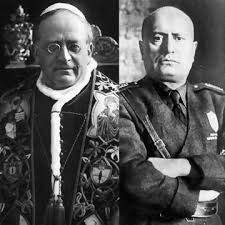

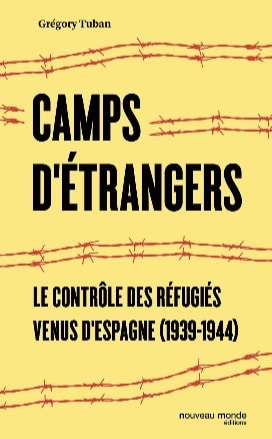
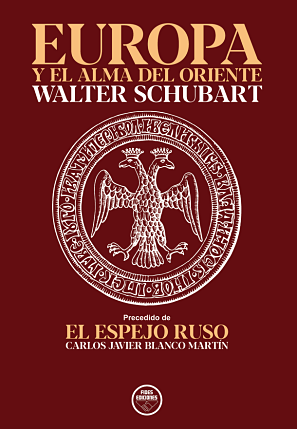

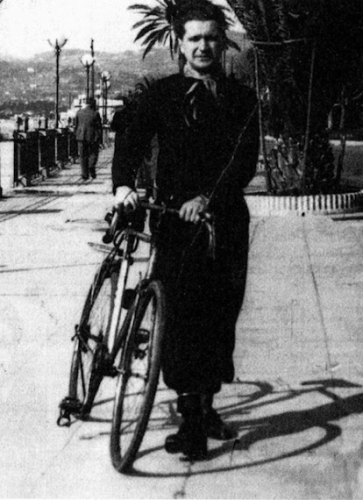 From this period until his definitive move to France (1941), Cioran would constantly ideologize his discourse, fight against pacifism as well as skepticism, and promote the fanaticization of the masses and the resort to violence in order to destroy critical thought – convinced of having discovered in Hitlerism a model dictatorship to be urgently imported into his own country. He also sought – with force, lyricism, and aggressiveness – to put before his compatriots the following choice: a mission or despair; the birth of a history or rotting in time’s ash-heap; the transfiguring leap or death . . . He wrote in the February 4, 1934 columns of Vremea:
From this period until his definitive move to France (1941), Cioran would constantly ideologize his discourse, fight against pacifism as well as skepticism, and promote the fanaticization of the masses and the resort to violence in order to destroy critical thought – convinced of having discovered in Hitlerism a model dictatorship to be urgently imported into his own country. He also sought – with force, lyricism, and aggressiveness – to put before his compatriots the following choice: a mission or despair; the birth of a history or rotting in time’s ash-heap; the transfiguring leap or death . . . He wrote in the February 4, 1934 columns of Vremea: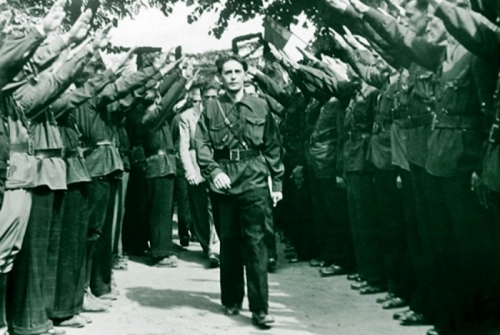

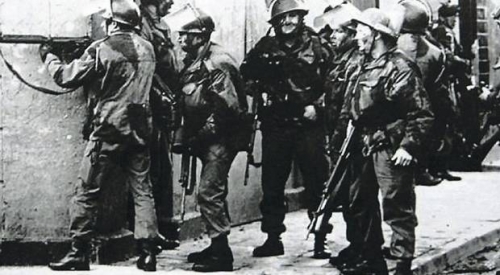
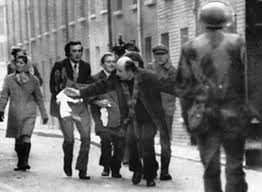


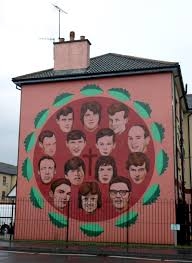 Au total, 691 soldats ont été tués par la PIRA (dont 197 UDR) et 6 par les loyalistes protestants. De leurs côté, les militaires ont abattus 121 PIRA, 10 loyalistes et 170 civils. La PIRA a tué 1457 civils dont, par règlements de compte, 162 autres « républicains » (c’est-à-dire plus que l’armée), et 28 loyalistes. Ces derniers ont tués 1071 civils.
Au total, 691 soldats ont été tués par la PIRA (dont 197 UDR) et 6 par les loyalistes protestants. De leurs côté, les militaires ont abattus 121 PIRA, 10 loyalistes et 170 civils. La PIRA a tué 1457 civils dont, par règlements de compte, 162 autres « républicains » (c’est-à-dire plus que l’armée), et 28 loyalistes. Ces derniers ont tués 1071 civils. 

 « Les premières années de sa carrière de dessinateur, Hergé doit tout à son patron, sauf son talent bien entendu. Le directeur Wallez lui offrit des opportunités et le mentor Wallez lui prodigua de précieux conseils et d’indispensables encouragements. L’abbé le prit sous son aile et lui apprit qu’il devait être plus exigeant envers lui-même, qu’il devait davantage travailler à son développement spirituel, tenter de répondre à des normes morales toujours plus rigoureuses, mettre la barre toujours plus haut. C’est lui qui incita Hergé à inventer lui-même une histoire et à ne plus illustrer les idées des autres. Il l’encouragea à créer un petit personnage qui serait un exemple pour les jeunes lecteurs du journal. On peut dire que Wallez a été, avec Hergé, à l’origine de Tintin. Il est de notoriété publique que c’est lui, et non le dessinateur, qui a décidé d’envoyer le sympathique petit reporter successivement au pays des Soviets et au Congo, tout d’abord pour mettre les jeunes en garde contre les dangers du bolchévisme et ensuite pour leur montrer le formidable travail accompli par les missionnaires belges dans la colonie. Mais Wallez fit encore bien plus. Il fut le premier “agent littéraire” de Hergé et parvint à vendre les aventures de Tintin à l’étranger, plus précisément à l’hebdomadaire français Cœurs Vaillants dirigé par l’abbé Gaston Courtois, avec qui il était lié d’amitié et partageait les mêmes opinions conservatrices ».
« Les premières années de sa carrière de dessinateur, Hergé doit tout à son patron, sauf son talent bien entendu. Le directeur Wallez lui offrit des opportunités et le mentor Wallez lui prodigua de précieux conseils et d’indispensables encouragements. L’abbé le prit sous son aile et lui apprit qu’il devait être plus exigeant envers lui-même, qu’il devait davantage travailler à son développement spirituel, tenter de répondre à des normes morales toujours plus rigoureuses, mettre la barre toujours plus haut. C’est lui qui incita Hergé à inventer lui-même une histoire et à ne plus illustrer les idées des autres. Il l’encouragea à créer un petit personnage qui serait un exemple pour les jeunes lecteurs du journal. On peut dire que Wallez a été, avec Hergé, à l’origine de Tintin. Il est de notoriété publique que c’est lui, et non le dessinateur, qui a décidé d’envoyer le sympathique petit reporter successivement au pays des Soviets et au Congo, tout d’abord pour mettre les jeunes en garde contre les dangers du bolchévisme et ensuite pour leur montrer le formidable travail accompli par les missionnaires belges dans la colonie. Mais Wallez fit encore bien plus. Il fut le premier “agent littéraire” de Hergé et parvint à vendre les aventures de Tintin à l’étranger, plus précisément à l’hebdomadaire français Cœurs Vaillants dirigé par l’abbé Gaston Courtois, avec qui il était lié d’amitié et partageait les mêmes opinions conservatrices ».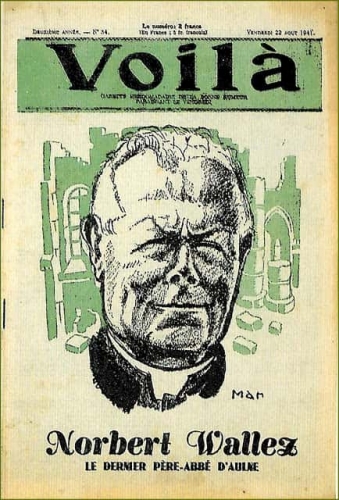 Le jeune Léon Degrelle publie des articles au sein du Vingtième Siècle sur les taudis, puis sur la situation des Cristeros, les paysans catholiques mexicains se soulevant contre le gouvernement anticatholique. Degrelle est appelé ensuite à exercer des fonctions ailleurs.
Le jeune Léon Degrelle publie des articles au sein du Vingtième Siècle sur les taudis, puis sur la situation des Cristeros, les paysans catholiques mexicains se soulevant contre le gouvernement anticatholique. Degrelle est appelé ensuite à exercer des fonctions ailleurs. Le professeur Petri (photo), qui a assisté au discours de l’abbé Wallez, attend ce dernier à la sortie de la salle et le félicite pour « […] son élévation, sa vigueur et la nouveauté de plusieurs de ses aperçus ».
Le professeur Petri (photo), qui a assisté au discours de l’abbé Wallez, attend ce dernier à la sortie de la salle et le félicite pour « […] son élévation, sa vigueur et la nouveauté de plusieurs de ses aperçus ».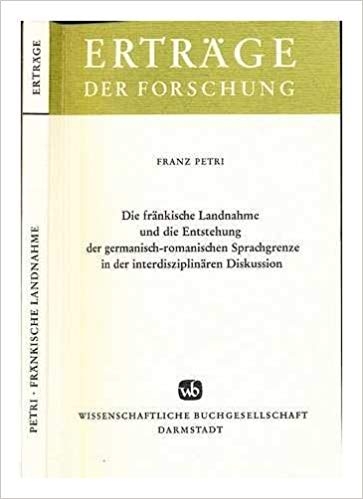 Le 28 février 1948, Wallez comparaît en appel. La peine est alourdie d’un an de prison supplémentaire. Il retourne à la maison de repos. Le dimanche 25 avril, il y est arrêté et ensuite emprisonné. Il est finalement relâché pour raison de santé, admis dans un hôpital et opéré.
Le 28 février 1948, Wallez comparaît en appel. La peine est alourdie d’un an de prison supplémentaire. Il retourne à la maison de repos. Le dimanche 25 avril, il y est arrêté et ensuite emprisonné. Il est finalement relâché pour raison de santé, admis dans un hôpital et opéré. Hergé, recyclé par la Résistance
Hergé, recyclé par la Résistance
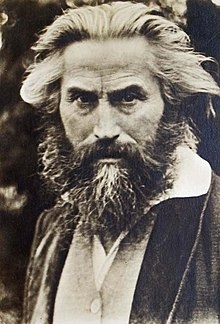 En 1889, Fidus reprend les cours réguliers qu’il s’était promis de suivre à Munich. Il y fait la connaissance de Wilhelm Hübbe-Schleiden, originaire, lui aussi, d’Allemagne du Nord, converti à la théosophie de l’occultiste Madame Blavatsky et partisan d’une politique coloniale allemande. Ce nati de Hambourg était un ami intime de Madame Blavatsky et de son adepte américain Henry Steel Olcott, qui avait fondé aux Etats-Unis une secte théosophique. La religiosité théosophique de Steel Olcott était un mélange obscur de bribes hétéroclites tirées des religions d’Asie et de trucs de prestigiditateur, qui avait pourtant acquis une notoriété internationale. Il faut aussi rappeler que ce cher Henry travaillait accessoirement pour le gouvernement américain. Pour rassembler leurs adeptes allemands, Hübbe-Schleiden édita une revue mensuelle, intitulée Sphinx, dont le graphiste principal fut évidemment le jeune Fidus. Cette collaboration dura trois ans. Influencé par les idées glanées dans la revue, Fidus fit siennes celles d’un « cercle de vie » et d’une « thérapie par la lumière ».
En 1889, Fidus reprend les cours réguliers qu’il s’était promis de suivre à Munich. Il y fait la connaissance de Wilhelm Hübbe-Schleiden, originaire, lui aussi, d’Allemagne du Nord, converti à la théosophie de l’occultiste Madame Blavatsky et partisan d’une politique coloniale allemande. Ce nati de Hambourg était un ami intime de Madame Blavatsky et de son adepte américain Henry Steel Olcott, qui avait fondé aux Etats-Unis une secte théosophique. La religiosité théosophique de Steel Olcott était un mélange obscur de bribes hétéroclites tirées des religions d’Asie et de trucs de prestigiditateur, qui avait pourtant acquis une notoriété internationale. Il faut aussi rappeler que ce cher Henry travaillait accessoirement pour le gouvernement américain. Pour rassembler leurs adeptes allemands, Hübbe-Schleiden édita une revue mensuelle, intitulée Sphinx, dont le graphiste principal fut évidemment le jeune Fidus. Cette collaboration dura trois ans. Influencé par les idées glanées dans la revue, Fidus fit siennes celles d’un « cercle de vie » et d’une « thérapie par la lumière ».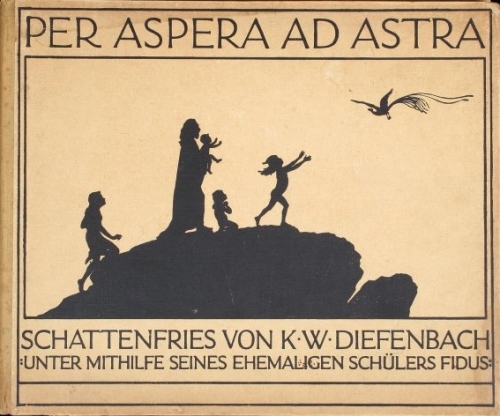
 Fidus, lui, quitta Munich pour Berlin, où il travailla pour des revues telles Jugend, Pan et Simplicissimus. Plus tard, il collabora à Kraft und Schönheit et à Die Schönheit. Le regard de Fidus sur la beauté naturelle du corps humain et son style « Art Nouveau », quelque peu édulcoré, firent de lui le graphiste le plus connu d’Allemagne au tournant du siècle.
Fidus, lui, quitta Munich pour Berlin, où il travailla pour des revues telles Jugend, Pan et Simplicissimus. Plus tard, il collabora à Kraft und Schönheit et à Die Schönheit. Le regard de Fidus sur la beauté naturelle du corps humain et son style « Art Nouveau », quelque peu édulcoré, firent de lui le graphiste le plus connu d’Allemagne au tournant du siècle.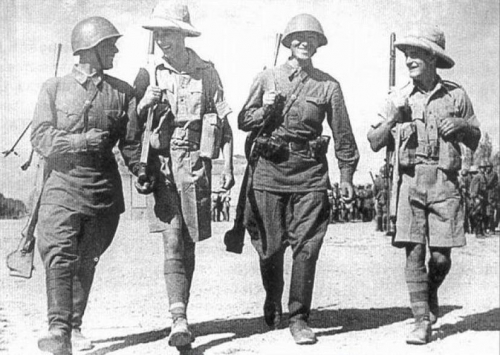
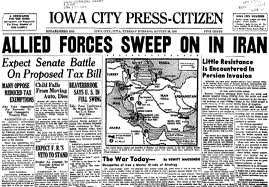
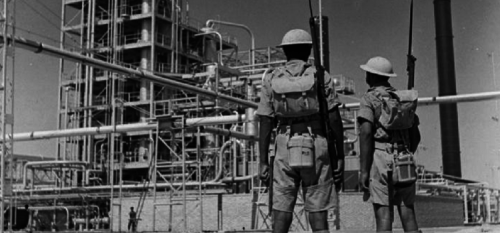
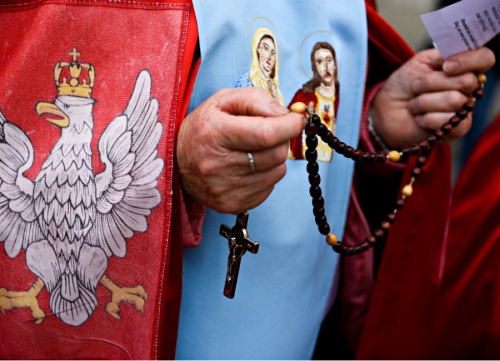
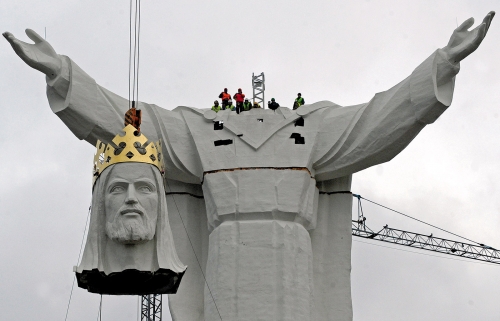
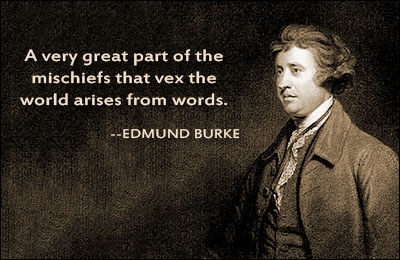
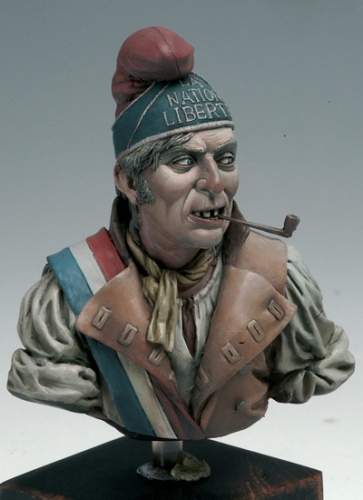 Such an apology and a reform (or series of reforms) the real revolutionaries mightily feared. Never had they actually sought reform of French society, whatever their claims and protestations. Instead, from the moment they began the revolution in 1789, they wanted to destroy and overturn all that opposed them and to do so utterly and completely, leaving no remnant and no possible opposition. To destroy as violently and wholly as possible, they needed to make a caricature of the aristocrat and the monarch. They needed to take the particular evils of each and make the average person believe them the universal and norm of each. Rather than examining the human condition, the true revolutionaries exaggerated its faults as manifested in the elites of society. They, Burke claimed in true Aristotelian and Thomistic fashion, redefined the thing, claiming its accidents to be its essence. Being revolutionaries, they could not create, they could only mock and pervert. Though the revolutionaries claimed to hate the violence and errors of the aristocracy, they submitted themselves to the very same evils, creating excuses for their own sins, as if necessary to expiate all of those of the past.
Such an apology and a reform (or series of reforms) the real revolutionaries mightily feared. Never had they actually sought reform of French society, whatever their claims and protestations. Instead, from the moment they began the revolution in 1789, they wanted to destroy and overturn all that opposed them and to do so utterly and completely, leaving no remnant and no possible opposition. To destroy as violently and wholly as possible, they needed to make a caricature of the aristocrat and the monarch. They needed to take the particular evils of each and make the average person believe them the universal and norm of each. Rather than examining the human condition, the true revolutionaries exaggerated its faults as manifested in the elites of society. They, Burke claimed in true Aristotelian and Thomistic fashion, redefined the thing, claiming its accidents to be its essence. Being revolutionaries, they could not create, they could only mock and pervert. Though the revolutionaries claimed to hate the violence and errors of the aristocracy, they submitted themselves to the very same evils, creating excuses for their own sins, as if necessary to expiate all of those of the past.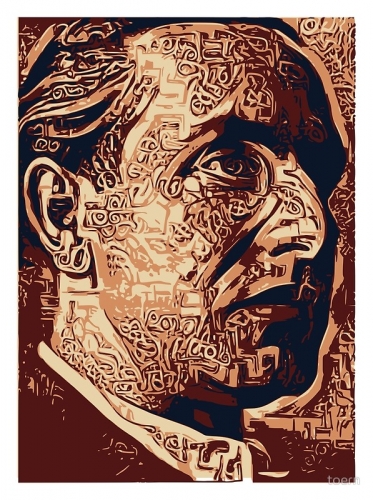
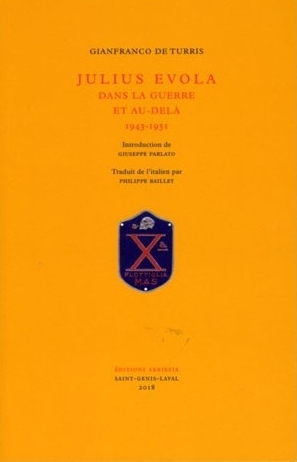 " Malgré les nombreuses études qui lui ont été consacrées, une période cruciale de la vie de Julius Evola restait encore dans l’ombre, d’autant plus que l’intéressé, discret jusqu’à la réticence au sujet de lui-même, en avait très peu parlé : les années 1943-1951, qui furent celles de l’attitude à adopter face à la grande crise du régime fasciste et à la fondation de la République sociale italienne (rsi), puis de l’accident survenu à Vienne début 1945 qui le laissa paralysé des membres inférieurs, du véritable « chemin de croix » médical qui suivit entre l’Autriche, la Hongrie et l’Italie, enfin du retour définitif à Rome au printemps de 1951.
" Malgré les nombreuses études qui lui ont été consacrées, une période cruciale de la vie de Julius Evola restait encore dans l’ombre, d’autant plus que l’intéressé, discret jusqu’à la réticence au sujet de lui-même, en avait très peu parlé : les années 1943-1951, qui furent celles de l’attitude à adopter face à la grande crise du régime fasciste et à la fondation de la République sociale italienne (rsi), puis de l’accident survenu à Vienne début 1945 qui le laissa paralysé des membres inférieurs, du véritable « chemin de croix » médical qui suivit entre l’Autriche, la Hongrie et l’Italie, enfin du retour définitif à Rome au printemps de 1951.
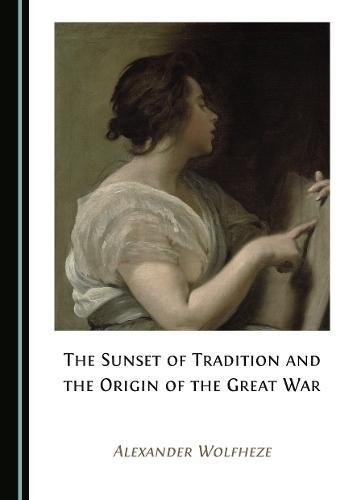 It’s not difficult to understand why, however, given that for a long time, Traditionalists have been operating under the guise of being purely concerned with religion and mysticism, remaining silent about the fact that Traditionalism in its complete form is one of the most – if not the most – reactionary current of thought that exists in the postmodern world. This is of course a consequence of the fact that most Traditionalist thinkers today have opted for the safety of academic careers (something which Evola noted already in the 1950s and for which he expressed his contempt), and thus want to avoid being called fascists. Their cover has been somewhat blown, however, as a result of Steve Bannon’s claim that Guénon was a crucial influence on him, which has in turn led to some superficial and ill-informed propaganda from journalists using Traditionalism as a branding iron with which to mark both Bannon and Trump (by association) as fascists, by bringing attention to the connection between Evola and Guénon. (And Evola had the audacity to call himself a “superfascist,” so by the logic of the average half-witted journalist of today, that makes Bannon and Trump really fascist!) It remains to be seen what the long-term consequences of this will be in terms of Traditionalism’s reception in the mainstream, although I’ve noticed that it’s become harder to find Evola and Guénon’s books on bookstore shelves these days. It may have the beneficial effect of forcing Traditionalists out of the realm of pure scholasticism and into putting their beliefs into practice, if academia ultimately becomes a hostile environment for them – which it inevitably will, if present trends continue. Time will tell.
It’s not difficult to understand why, however, given that for a long time, Traditionalists have been operating under the guise of being purely concerned with religion and mysticism, remaining silent about the fact that Traditionalism in its complete form is one of the most – if not the most – reactionary current of thought that exists in the postmodern world. This is of course a consequence of the fact that most Traditionalist thinkers today have opted for the safety of academic careers (something which Evola noted already in the 1950s and for which he expressed his contempt), and thus want to avoid being called fascists. Their cover has been somewhat blown, however, as a result of Steve Bannon’s claim that Guénon was a crucial influence on him, which has in turn led to some superficial and ill-informed propaganda from journalists using Traditionalism as a branding iron with which to mark both Bannon and Trump (by association) as fascists, by bringing attention to the connection between Evola and Guénon. (And Evola had the audacity to call himself a “superfascist,” so by the logic of the average half-witted journalist of today, that makes Bannon and Trump really fascist!) It remains to be seen what the long-term consequences of this will be in terms of Traditionalism’s reception in the mainstream, although I’ve noticed that it’s become harder to find Evola and Guénon’s books on bookstore shelves these days. It may have the beneficial effect of forcing Traditionalists out of the realm of pure scholasticism and into putting their beliefs into practice, if academia ultimately becomes a hostile environment for them – which it inevitably will, if present trends continue. Time will tell.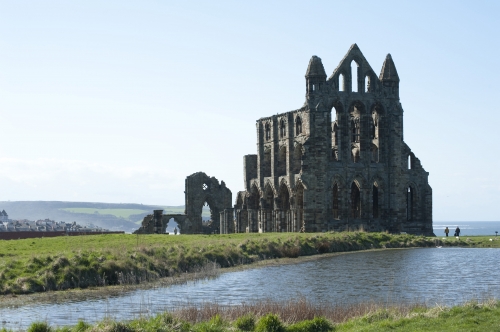
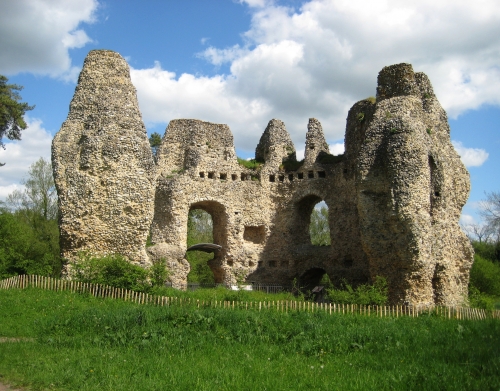


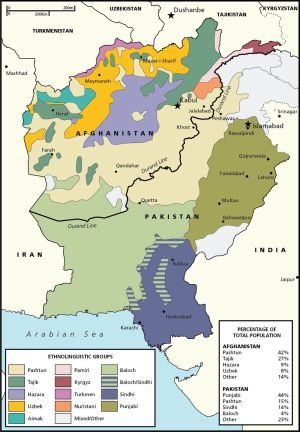 Ook de transportcorridor door Pakistan heeft met dergelijke destabilisaties te kampen. In deze regio strekken veel bevolkingsgroepen zich uit over de grens tussen Afghanistan en Pakistan, zodat instabiliteit in Afghanistan ook uitstraalt naar Pakistaanse regio’s.
Ook de transportcorridor door Pakistan heeft met dergelijke destabilisaties te kampen. In deze regio strekken veel bevolkingsgroepen zich uit over de grens tussen Afghanistan en Pakistan, zodat instabiliteit in Afghanistan ook uitstraalt naar Pakistaanse regio’s. Nog groter is het potentieel van de zogeheten
Nog groter is het potentieel van de zogeheten 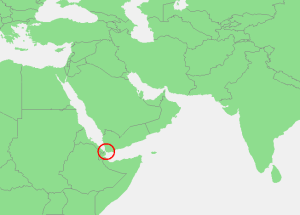 De Noordoostelijke Doorvaart biedt dus veel voordelen ten opzichte van de nu gangbare route. Het gebied rond het Suez-kanaal is momenteel immers bepaald instabiel. De Straat van Bab el Mandeb, die vanuit de Golf van Aden toegang geeft tot de Rode Zee en het Suezkanaal, ligt immers tussen Jemen enerzijds en Eritrea/Djibouti anderzijds. In Jemen voert een Arabische coalitie onder leiding van Saoedi-Arabië en met ondersteuning van de VS, het Verenigd Koninkrijk en Frankrijk een
De Noordoostelijke Doorvaart biedt dus veel voordelen ten opzichte van de nu gangbare route. Het gebied rond het Suez-kanaal is momenteel immers bepaald instabiel. De Straat van Bab el Mandeb, die vanuit de Golf van Aden toegang geeft tot de Rode Zee en het Suezkanaal, ligt immers tussen Jemen enerzijds en Eritrea/Djibouti anderzijds. In Jemen voert een Arabische coalitie onder leiding van Saoedi-Arabië en met ondersteuning van de VS, het Verenigd Koninkrijk en Frankrijk een 
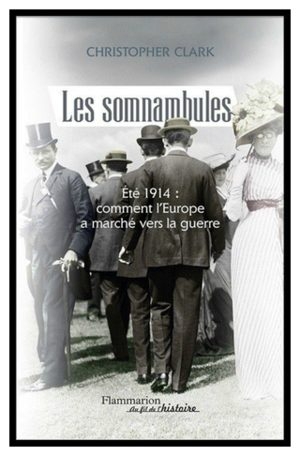
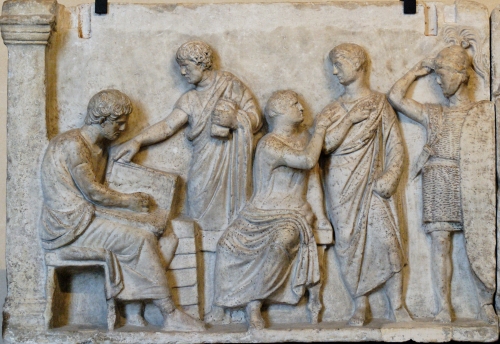
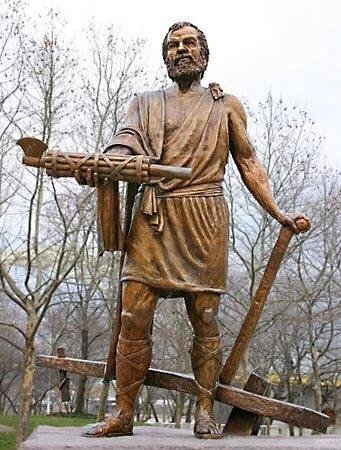 Lucius Quinctius Cincinnatus
Lucius Quinctius Cincinnatus

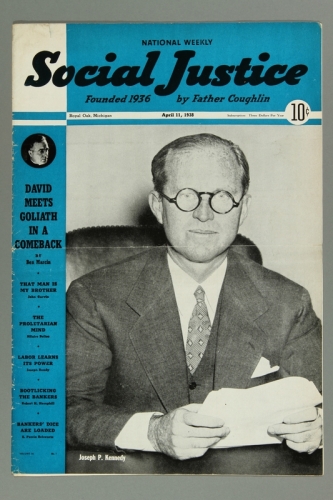 The paper was PM, and for the first two years of its existence (1940-42), it exulted in damning Father Coughlin as a seditionist, a yellow-journalist, a Nazi mouthpiece, and an impious opponent of democracy. PM began with a long series of articles in the summer of 1940. “Nazi Propagandist Coughlin Faithless to Church and Country: Hatred and Bigotry Spread Throughout the Nation by Priest,” screamed one headline. After American entry into the war, histrionic, full-page editorials by Editor Ingersoll became a regular feature; e.g., one titled “Has Charles Coughlin Lied Again?”
The paper was PM, and for the first two years of its existence (1940-42), it exulted in damning Father Coughlin as a seditionist, a yellow-journalist, a Nazi mouthpiece, and an impious opponent of democracy. PM began with a long series of articles in the summer of 1940. “Nazi Propagandist Coughlin Faithless to Church and Country: Hatred and Bigotry Spread Throughout the Nation by Priest,” screamed one headline. After American entry into the war, histrionic, full-page editorials by Editor Ingersoll became a regular feature; e.g., one titled “Has Charles Coughlin Lied Again?”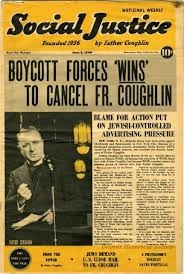 From the start, PM was renowned for its crankiness and an eagerness to print facts and speculation side-by-side, journalistic taste be damned. For example, in 1941 New Yorker editor Harold Ross discovered that his male secretary had embezzled about a hundred thousand dollars from him over the years. Ross wanted to keep the story hushed up, especially after the greedy amanuensis gassed himself in his Brooklyn apartment and was revealed to be a homosexual who squandered the dough on boyfriends, the turf club, and maybe a blackmailer. This was Harold Ross’ nightmare idea of a scandal. Most of his friends in the press were happy to help him bury the lurid tale. Not PM, though, which printed the murky details of the kitchen suicide, as well as the disarray of Ross’ personal finances.
From the start, PM was renowned for its crankiness and an eagerness to print facts and speculation side-by-side, journalistic taste be damned. For example, in 1941 New Yorker editor Harold Ross discovered that his male secretary had embezzled about a hundred thousand dollars from him over the years. Ross wanted to keep the story hushed up, especially after the greedy amanuensis gassed himself in his Brooklyn apartment and was revealed to be a homosexual who squandered the dough on boyfriends, the turf club, and maybe a blackmailer. This was Harold Ross’ nightmare idea of a scandal. Most of his friends in the press were happy to help him bury the lurid tale. Not PM, though, which printed the murky details of the kitchen suicide, as well as the disarray of Ross’ personal finances.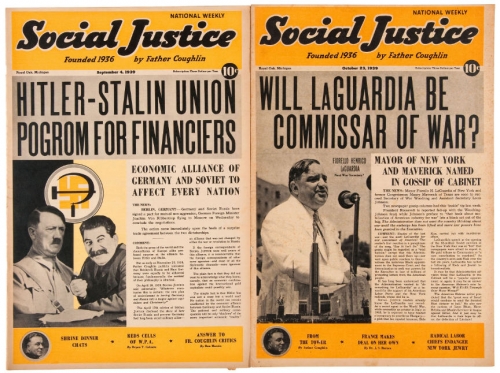
 Fr. Coughlin lived until 1979, seldom remarked upon or remembered. Since that time, the smear campaign has begun anew, as though taken straight from the pages of the 1942 PM. All the trite pejoratives get leveled at him: fascist, pro-Nazi, conspiracy-thinker. And, of course, “anti-Semite.” The website of Washington, DC’s Holocaust Museum even has a page dedicated to him, and it’s filled with every sort of twist and innuendo in the cliché barrel. For example, after Germany’s Kristallnacht made the headlines in November 1938, the priest gave a radio talk explaining the background to the news. This is spun as Coughlin “defend[ing] the state-sponsored violence of the Nazi regime,” although he did not, in fact, endorse violence, window-breaking, or persecution of Jews. From sites such as this, you might get the impression that Fr. Coughlin was a sort of Julius Streicher in a Roman collar.
Fr. Coughlin lived until 1979, seldom remarked upon or remembered. Since that time, the smear campaign has begun anew, as though taken straight from the pages of the 1942 PM. All the trite pejoratives get leveled at him: fascist, pro-Nazi, conspiracy-thinker. And, of course, “anti-Semite.” The website of Washington, DC’s Holocaust Museum even has a page dedicated to him, and it’s filled with every sort of twist and innuendo in the cliché barrel. For example, after Germany’s Kristallnacht made the headlines in November 1938, the priest gave a radio talk explaining the background to the news. This is spun as Coughlin “defend[ing] the state-sponsored violence of the Nazi regime,” although he did not, in fact, endorse violence, window-breaking, or persecution of Jews. From sites such as this, you might get the impression that Fr. Coughlin was a sort of Julius Streicher in a Roman collar.
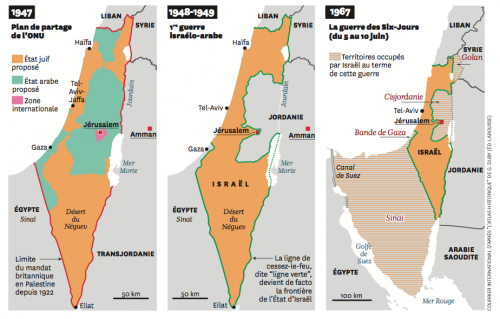
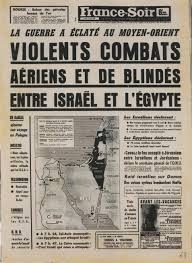 Dans le monde arabe, à la défaite militaire s’ajoute la défaite symbolique. Il y a bien évidemment l’humiliation de l’occupation : le Sinaï égyptien (qui sera récupéré par le président Sadate), le Golan syrien (annexé en 1981), les fermes libanaises de Chebaa et les territoires palestiniens de Gaza et de Cisjordanie (dont Jérusalem-Est), administrés auparavant par l’Égypte et la Jordanie. Il y a aussi la spoliation du peuple palestinien, qui se retrouve occupé et malmené pendant des décennies par une puissance étrangère. Mais il y a aussi l’échec du nationalisme arabe qui en annoncera bien d’autres. Cet échec de trois grandes armées arabes encouragera le réveil de la résistance palestinienne. Dans les années 1970, l’Organisation de libération de la Palestine (OLP) jouera un rôle analogue à celui de Nasser, décédé en 1970. En Jordanie comme au Liban, Yasser Arafat apparaîtra comme une figure tutélaire à son tour, stimulé par quelques succès militaires dont les grandes armées arabes ont été incapables. On retrouvera ce phénomène avec le Hezbollah libanais. Un peu plus de dix ans après cette guerre, à la cause arabe contre Israël se substituera une cause nouvelle, nourrie par la montée du wahhabisme à la faveur des pétrodollars, celle de la guerre d’Afghanistan (1979). Tandis que l’Égypte vient de signer un traité de paix avec Israël (ce que la Jordanie fera en 1994), des milliers de combattants venus du monde arabe se retrouveront ainsi plongés dans un conflit lointain au nom d’une appartenance religieuse, encouragés par les Américains et contre l’ennemi « impie » tout désigné : l’Union soviétique.
Dans le monde arabe, à la défaite militaire s’ajoute la défaite symbolique. Il y a bien évidemment l’humiliation de l’occupation : le Sinaï égyptien (qui sera récupéré par le président Sadate), le Golan syrien (annexé en 1981), les fermes libanaises de Chebaa et les territoires palestiniens de Gaza et de Cisjordanie (dont Jérusalem-Est), administrés auparavant par l’Égypte et la Jordanie. Il y a aussi la spoliation du peuple palestinien, qui se retrouve occupé et malmené pendant des décennies par une puissance étrangère. Mais il y a aussi l’échec du nationalisme arabe qui en annoncera bien d’autres. Cet échec de trois grandes armées arabes encouragera le réveil de la résistance palestinienne. Dans les années 1970, l’Organisation de libération de la Palestine (OLP) jouera un rôle analogue à celui de Nasser, décédé en 1970. En Jordanie comme au Liban, Yasser Arafat apparaîtra comme une figure tutélaire à son tour, stimulé par quelques succès militaires dont les grandes armées arabes ont été incapables. On retrouvera ce phénomène avec le Hezbollah libanais. Un peu plus de dix ans après cette guerre, à la cause arabe contre Israël se substituera une cause nouvelle, nourrie par la montée du wahhabisme à la faveur des pétrodollars, celle de la guerre d’Afghanistan (1979). Tandis que l’Égypte vient de signer un traité de paix avec Israël (ce que la Jordanie fera en 1994), des milliers de combattants venus du monde arabe se retrouveront ainsi plongés dans un conflit lointain au nom d’une appartenance religieuse, encouragés par les Américains et contre l’ennemi « impie » tout désigné : l’Union soviétique.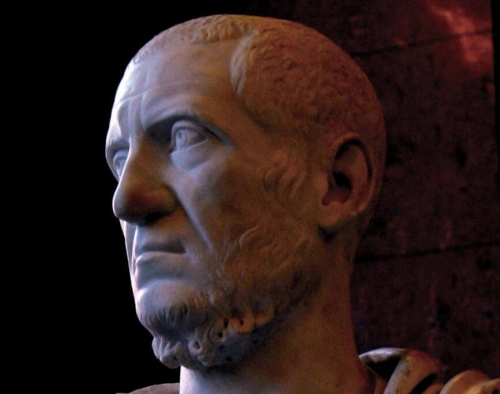
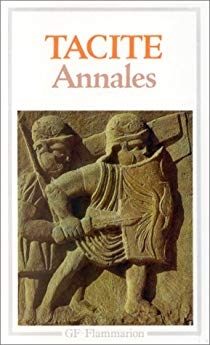 Voici les propos qu’on lui prête :
Voici les propos qu’on lui prête :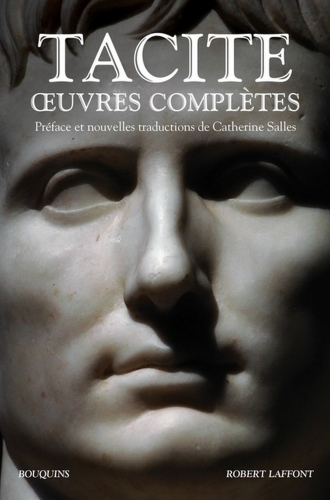 Selon ce grandiose Calgacus, on est là aussi pour être rincés par les impôts qui n’ont jamais été aussi élevés (France, Allemagne, USA) pour les couches faibles et moyennes dans ce monde pourtant si libéral :
Selon ce grandiose Calgacus, on est là aussi pour être rincés par les impôts qui n’ont jamais été aussi élevés (France, Allemagne, USA) pour les couches faibles et moyennes dans ce monde pourtant si libéral :